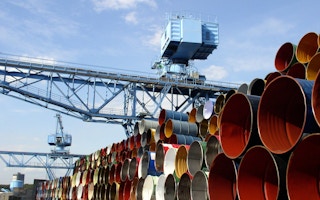World oil markets are in the midst of a rout. Their collapse results from the quick succession of two historic shocks.
In early March, the breakdown of a production reduction agreement among OPEC, led by Saudi Arabia, and Russia, triggered a first fall in prices. The global wave of lockdowns aimed at curbing the Covid-19 pandemic then destroyed nearly a quarter of global demand over the past two months.
The price of a barrel collapsed below $15 for the first time since the early 1980s – even more implausibly, the United States oil benchmark contract went negative for the month of May.
This might sound like a boon for household purchasing power and industry production costs – a welcome windfall that would facilitate the future recovery. But the consequences of this price shock could be disastrous for the transition to a low-carbon economy.
“
To achieve our climate goals, the majority of the world’s known oil reserves must remain underground.
Low oil prices present a very bad signal in the fight against climate change. They orient investment and research and development away from decarbonised solutions, especially in the transport sector.
On average, each additional dollar per barrel of conventional oil corresponds to an implicit carbon tax of $2 per ton of carbon dioxide. This price signal results directly from the global balance of supply and demand: advantageously, it does not require any political will to sustain it.
The collapse of oil markets has thus led to the vanishing of an implicit tax of nearly $80 per ton of carbon dioxide on oil since December 2019.
Oil prices could hopefully rebound when the world economy reopens, which would discourage the temptation of a brown recovery – but this is far from certain.
Much of the current price collapse is due to the inability to sufficiently curtail oil production in the face of falling demand. Despite a historic agreement between Russia and Saudi Arabia to cut production by 9.8 million barrels per day (MMbd), world production still exceeds demand by an estimated 15 MMbd.
This unprecedented imbalance is saturating storage capacity globally. In the most extreme cases, producers are ready to pay buyers to offload their oil, pushing prices into negative territory. This scenario, unimaginable only a month ago, was realised throughout North America on April 20.
OPEC projects that global storage capacity, estimated at around 6 billion barrels, will be completely saturated in May. The world economy will therefore emerge from the pandemic floating on more than 60 days of oil consumption stored below $20 a barrel. This massive supply buffer could contribute to persistent low prices throughout the recovery.
If global production remains high, even a robust economic rebound will empty these reserves only very gradually.
Saudi Arabia’s strategy could prove even more damaging in the medium term. Its decisions during the early March feud with Russia reveal that Saudi leaders appreciate the threat posed to them by global decarbonisation efforts.
To achieve our climate goals, the majority of the world’s known oil reserves must remain underground. The world’s leading oil-producing nations are therefore going to be forced into a faceoff to determine who will ultimately be able to sell the largest share of their reserves.
In this upcoming struggle, Saudi Arabia boasts a weapon of choice: its oil is one of the cheapest to extract in the world. It is therefore able to withstand, and even trigger, much lower prices than its competitors – especially in North America. The conflict triggered by OPEC’s decision on March 6 was thus directed against both Russia and American shale oil.
This strategy is not without risk for the Saudi kingdom, which currently requires an $80 barrel to balance its budget. But it would be very difficult to counter for the United States, especially as the current crisis seems poised to lead to a tidal wave of bankruptcies in the American shale oil sector.
Above all, Saudi Arabia’s strategy would also lead to an artificially low price for crude oil – slowing down global efforts to get out of fossil fuels.
When the recovery comes, the lure of cheap oil may seem hard to resist. Yet at a time when pressures are mounting across Europe to postpone the energy transition in the name of economic recovery, it is essential to avoid the trap of cheap oil.
Aurélien Saussay is a research officer in the Grantham Research Institute at the London School of Economics.
This story was published with permission from Thomson Reuters Foundation, the charitable arm of Thomson Reuters, that covers humanitarian news, climate change, resilience, women’s rights, trafficking and property rights. Visit http://news.trust.org/climate.


















